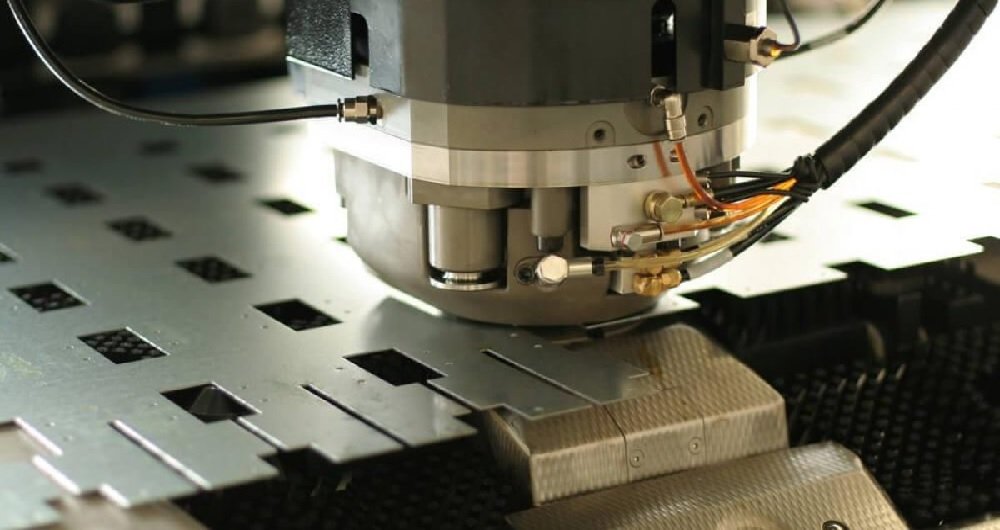Modern metal stamping describes techniques and processes that accurately shape, cut, and form metal sheets into desired designs using sophisticated machinery and stamping die design tools. This kind of manufacturing provides precision, efficiency, and adaptability.
In the modern world, metal stamping is experiencing its greatest growth. These latest developments will have a big impact on metal stamping in the future since they are changing the way manufacturers approach product design and production processes. The innovators of metal stamping’s precision engineering and technological improvement are listed below:
Quality Control and In-Press Monitoring
Manufacturers often use quality control and in-press monitoring systems to ensure product quality and consistency. These systems use cameras and sensors to track stamping parameters, identify defects, and give operators fast feedback. This proactive strategy reduces costs and boosts output by reducing waste and rework.
Integration of AI and Machine Learning
Stamping machines may become more accurate and waste-free by using machine learning to help them learn from their mistakes and adjust to changing circumstances. Machine learning and artificial intelligence will save costs, expedite production timelines, and enhance product quality. In a highly competitive market, the capacity to optimize manufacturing processes in real time will be a critical difference.
Tooling Flexibility
There is no requirement for uniformity. Magnetic systems make tooling designs and setups more versatile. Advanced stamping die designs help to shape and cut the metals in the required size.
They improve manufacturing flexibility by enabling rapid modifications and adaptations to various tool geometries or production demands without requiring significant retooling.
Durability
Metal stamping is not immune to the growing concern over sustainability in the industrial sector. Manufacturers face pressure to lower energy consumption, waste, and environmental impact. To address these issues, manufacturers employ cutting-edge materials and waste and energy-saving production methods.
For instance, utilizing recycled materials can cut expenses and waste. Furthermore, energy consumption can be decreased by using innovative stamping techniques like hot stamping, which consumes less energy than cold stamping.
These sustainability trends are expected to become more popular in the metal stamping sector as producers look for ways to save expenses without sacrificing environmental quality.
Adoption of Advanced Automation
The growing use of sophisticated automation is a notable development in the metal stamping market. Automated quality control systems and robotic arms for accurate stamping operations are just two examples of how manufacturers use automation to boost productivity, cut labour costs, and increase efficiency.
This pattern demonstrates the sector’s commitment to adopting cutting-edge technologies to gain a competitive advantage.
Energy Efficiency
In many cases, magnetic technology uses less energy than certain conventional techniques. The MCCB metal stamping parts are used in highly powered electrical appliances.
This energy efficiency makes it a more sustainable option for production because it can result in financial savings and a reduced environmental impact.
3D Printing Transformation
Manufacturers can create complicated parts more rapidly and affordably than traditional tooling processes by integrating 3D printing technology with conventional metal stamping procedures. This makes it particularly helpful for prototype and small-batch manufacturing.
This is made feasible because 3D printing may reduce the material needed for each element and eliminate the need for several production phases.
Precision Metal Stamping for Miniaturization
Numerous industries, ranging from electronics to medical equipment, are showcasing the pervasive tendency of miniaturization. Developing and applying precision metal stamping technology is crucial to simplifying the production of intricate, small-part parts with high accuracy.
As consumer electronics and medical equipment become smaller, precision metal stamping becomes an increasingly significant trend. This is due to the increasing demand for components with higher levels of functionality and intricate design.
Partial Words
Metal stamping technology would progress in efficiency, accuracy, and speed. The metal stamping sector uses sustainable production techniques to maximize productivity while satisfying environmental and customer demands.
By implementing innovative strategies that minimize scrap production and maximize energy use, everyone concerned can look forward to a better future.
